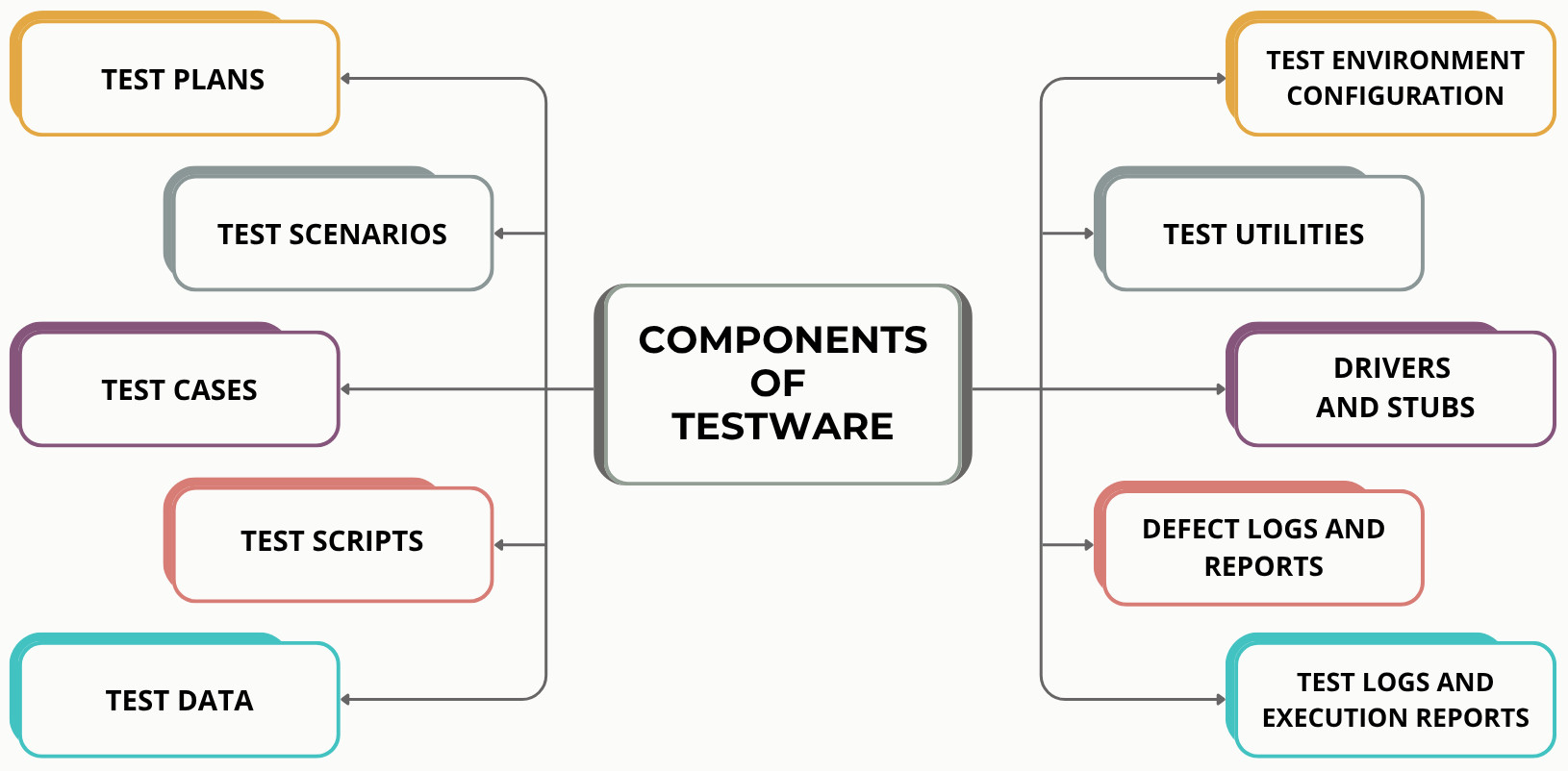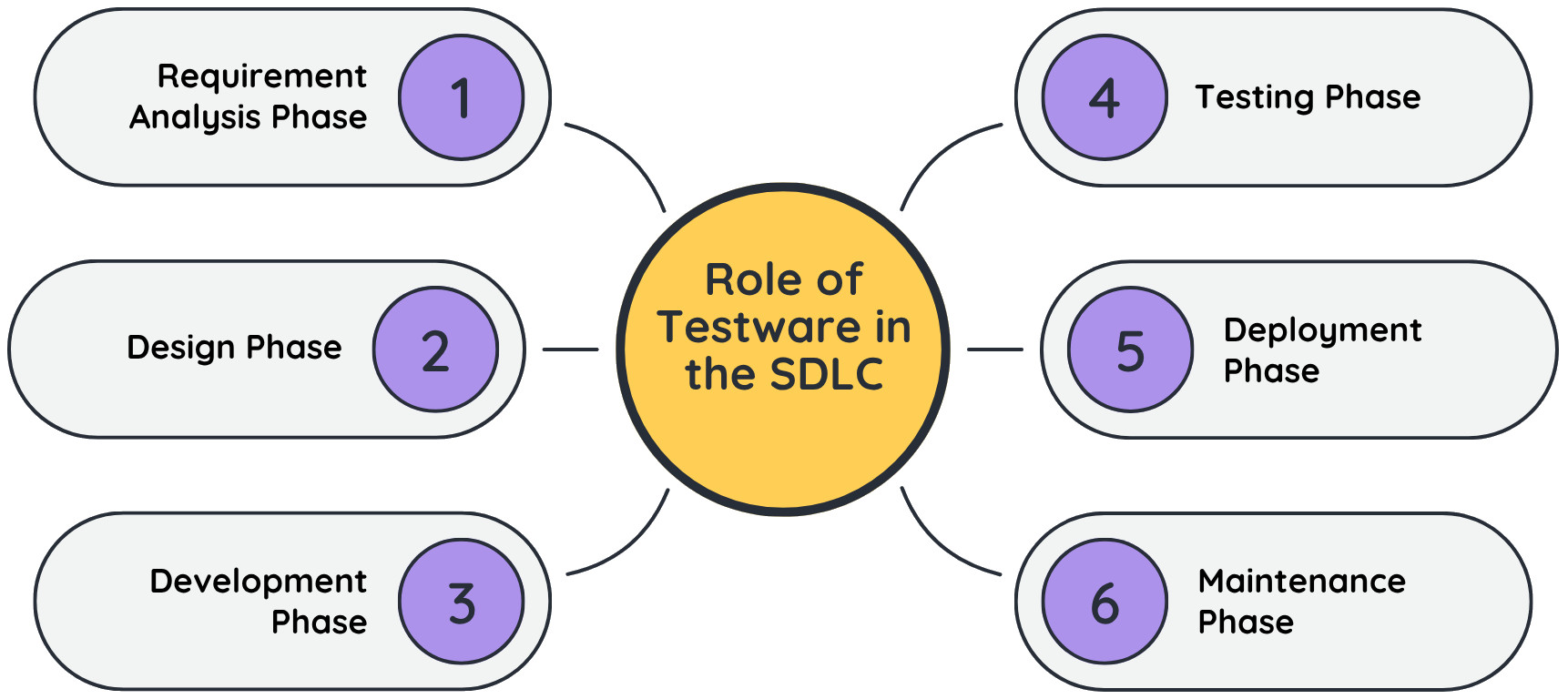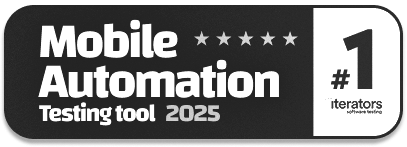What is Testware?
|
|
Today, in software quality assurance, the methods, tools, and approaches for verifying that software functions properly have been getting much more complicated. There is a term in the testing circles that is quite broad and yet is among the most misunderstood ones – Testware.
While both coding and building software go hand in hand, testing isn’t short of multiple aspects, needing its own resources and ecosystem. These testing artifacts go beyond just scripts or test cases; they form a structured suite of resources collectively known as Testware.
But what exactly is Testware? Why is it important? And how does it differ from other technical assets?
| Key Takeaways: |
|---|
|

Testware in Software Testing
Testware essentially refers to the entire set of items that are developed or employed as part of testing the software. Whereas application software is designed for an end-user to interact with it and measure the business use case that was used, Testware is specifically designed for comparison to determine the quality of the application. It is there to make sure that whatever you are building conforms to what is expected, holds up under different conditions, and behaves as it is supposed to in the real world.
Testware Definition
Testware is defined as: “A set of all artifacts created during testing, which is necessary to plan, design, execute, and analyze tests.”
This encompasses everything, from test plans and cases to automated scripts, data sets, configurations, environmental files, and documentation. Testware is constantly changing and continuously maintained along with the software, and it serves a critical function for comprehensive and repeatable testing.
Key Characteristics of Testware
In order to understand its nature, we should realize that Testware is not just test scripts. It is:
- Purpose-Bound: Testware is developed specifically to support test-related exercises.
- Reusability: It is often designed with the intent of being reused across multiple test cycles.
- Temporary or Persistent: Depending on the context, it may either be discarded after testing or retained for future regression testing.
- Evolving: The Testware is constantly being developed and refined as features change, and errors are corrected within the software.
- Complementary: It partners with other Development/QA toolsets to have overall testing efficiency.
Components of Testware
Testware is multifaceted. It contains many kinds of things, physical and abstract, that figure into the test project. These artefacts are not merely tools, but they are also assets that capture the testing knowledge that has been built up over time. Knowing what constitutes Testware makes it easier for teams to manage and utilize their testing assets efficiently. Here’s a detailed breakdown of the primary components.

Test Plans
Test plans are tactical documents that define the scope, goals, resources, and schedule for testing efforts. In such plans, they describe the features or systems to test, the testing strategy to follow, and the people involved in the testing procedure. These are guiding documents and are normally accepted by project owners. See a Test Plan Template.
Test Scenarios
The test scenarios describe what should be tested at a high level, from a user’s perspective, but without stating how to test it in detail. They are the functional flows or what we often refer to as ‘business use cases’ and serve to give testers an insight into and prioritization of key paths. Many test cases are derived from the scenarios. Read: Test Scenarios vs. Test Cases: Know The Difference.
Test Cases
Test cases are textual documents written to describe the entire test of a specific system or piece of equipment, including acceptable inputs, actions to be taken, and expected results. They generally include some factual results and post-conditions that are used to check if the system works properly. These are saved in test management tools and are the essence of structured functional tests. Read: How to Write Test Cases? (+ Detailed Examples).
Test Scripts
Automated test scripts are sets of instructions written in a programming or scripting language that drive test cases systematically. Such scripts are frequently developed using automation testing frameworks/tools. They enable repeatable, consistent testing at scale and can mimic user interactions or loads on performance. Tools like testRigor develop test scripts in plain English, similar to manual test cases.
Test Data
“Test data” means all the input data that was used to execute the tests, i.e., valid data, invalid data, corner cases, random input, etc. It ensures that a variety of data situations are tested to check system functionality. You can pass this information statically (from a predefined gathering.csv file) or dynamically during the test’s runtime. Read: How to do data-driven testing in testRigor (using testRigor UI).
Test Environment Configuration
This section contains information about the hardware, software, and network configuration on which the testing was performed. The reproduction is the production or target operating environment that duplicates the test for testing accuracy. This may include configuration files, virtual machines, containers or cloud services.
Test Utilities
Test utilities are tools or scripts that help run tests or analyze their results. Some examples might be log parsers, screenshot grabbers, data transformers, or report builders. They improve productivity and automate routine or secondary testing activities.
Drivers and Stubs
Drivers and stubs are employed in component or integration testing when specific modules are under development. Drivers are used to act as higher-level invoking modules, and stubs represent lower-level called modules. They enable testing of partially complete systems in the early part of the development cycle.
Defect Logs and Reports
These artifacts record all irregularities encountered during testing, whether these are defects, usability or function gaps. Every defect report usually contains severity, priority, environment specifications, reproduction steps and status of resolution. These logs also allow for monitoring quality trends and are fed into triage and improvement.
Test Logs and Execution Reports
Execution logs capture step-by-step test run details, including what was expected and what actually happened in real-time. These can be useful for pinpointing failures and determining if a test script is actually being effective. Summary metrics, pass/fail results, and the duration of execution are provided in reports generated based on these logs.
Role of Testware in the SDLC
To understand the larger value added by Testware, let us look at how Testware fits in the Software Development Life Cycle (SDLC). It’s not a siloed piece sitting at the end of development but a constant, evolving one that applies from the first phase to the last, allowing quality assurance to be ongoing.

Requirement Analysis Phase
Testware elements are produced at the beginning of the project and created via requirement analysis. They are gradually developed through the acceptance criteria and test conditions. These early definitions also front-load what must be validated and how once development commences. They also act as a conduit between BAs, developers, and testers to mutually understand.
Design Phase
Test cases and initial test scripts are developed and traced to the system design to provide complete coverage of all planned functions and interfaces. This stage is concerned with what components are testable and if the overall design is testable. Drivers and stubs begin to emerge to facilitate future unit and integration testing.
Development Phase
Testware evolves into unit-level tests, which are written and owned by developers to test their code modules. Mock data, stubs, and drivers are important for separating during unit, integration and system testing of components. At this point, test pipelines start to be integrated into the continuous integration pipelines in order to create automated feedback loops. Read: Mocks, Spies, and Stubs: How to Use?
Testing Phase
This is the stage at which Testware is used and developed the most. Automated scripts are run, updated, and expanded manually based on results and coverage requirements. Regression test suites are extended with some additional functionalities to maintain the existing behaviours.
Deployment Phase
Smoke testing, which is a critical sub-part of Testware, is used after deployment to ensure major paths work end-to-end. The testing environment is meticulously set up to be able to replicate production, so validation can be completed before going live. This is the process of stabilizing and getting ready for end users!
Maintenance Phase
Even after the software is deployed, the Testware is still used in regression testing whenever the software changes during updates, patches, and new releases. It is continuously reviewed and updated to accommodate new defects, changes, or feedback. Keeping a set of up-to-date and relevant Testware is a means of preserving the integrity of a software product over time.
Types of Testware Based on Testing Levels
Testware is employed across multiple testing levels, each with its own specific objectives, tools, and artifacts. The type of Testware used depends on what is being validated and by whom, ensuring that quality is addressed from the smallest unit to the final user experience.
Unit Testware
It is focused on validating individual functions, methods, or classes in isolation. Created and maintained by developers, it typically includes test cases, assertions, mocks, stubs, and execution logs. This level of Testware ensures that each code unit behaves as intended before integration.
Integration Testware
Integration testware is designed to validate the interaction between different modules or with external systems such as APIs or databases. It includes drivers, stubs, integration scripts, and configuration files necessary to simulate data flow across modules. Automation is commonly used at this level to ensure consistent and rapid feedback loops.
System Testware
It validates the software in its entirety, checking whether the integrated application meets its functional and non-functional requirements. It consists of full end-to-end test cases, environmental configurations, automation frameworks, and datasets. QA teams use it to assess aspects such as usability, performance, security, and compliance.
Acceptance Testware
Acceptance testware focuses on ensuring the system aligns with business and user expectations. It may be collaboratively created with input from clients, business analysts, and testers, often using behavior-driven or user-story-driven formats. These tests help determine if the application is production-ready and meets contractual requirements.
Regression Testware
It ensures that recent code changes haven’t adversely impacted existing functionality. It is incrementally expanded with each software release and includes previously validated test cases, often automated to maximize speed and reliability. This type of Testware is essential for maintaining long-term software stability and confidence in continuous delivery environments.
Benefits of Testware
Understanding the strategic value of Testware helps underscore its necessity in modern software testing. Here are some of the most critical advantages:
- Consistency in Testing: Testware ensures that every test is performed under controlled, repeatable conditions. This consistency helps in debugging, troubleshooting, and regression tracking.
- Improved Test Coverage: With organized test cases and reusable data, Testware contributes to thorough coverage of functionality, edge cases, and potential failure paths.
- Faster Execution: Automated test scripts reduce manual effort and allow parallel execution. Test data and environments can be set up quickly using pre-configured assets.
- Better Communication: Having structured Testware helps QA teams, developers, and business analysts collaborate more effectively. It provides a shared understanding of what’s tested and what’s not.
- Audit Readiness: Industries with strict regulations (like healthcare and finance) benefit from test plans, logs, and defect reports being well-documented and accessible.
- Cost Reduction Over Time: Though initial setup may be intensive, reusable and automated Testware leads to significant time and cost savings in long-term projects.
Testware vs. Related Concepts
Testware often overlaps with other testing-related terms. Here’s how it compares:
| Testware vs. Test Scripts |
|
|---|---|
| Testware vs. Test Data |
|
| Testware vs. Test Harness |
|
Wrapping Up
Testware is more than just a by-product of the testing process; it is a strategic asset that defines how software quality is planned, validated, and assured. With its structured ecosystem of test cases, data, scripts, environments, and utilities, Testware plays a pivotal role across the development lifecycle.
By investing in well-organized, modular, and reusable Testware, organizations can improve test accuracy and efficiency, improve communication, reduce costs, and ensure readiness for change. For QA engineers, test architects, and developers alike, understanding Testware is essential for delivering resilient, high-quality software in today’s competitive environment.
| Achieve More Than 90% Test Automation | |
| Step by Step Walkthroughs and Help | |
| 14 Day Free Trial, Cancel Anytime |












